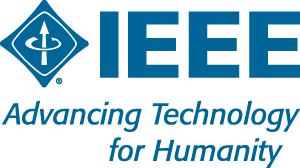
Oral Session C : Friday March 22, 2013 / 11:30 - 12:30
| 19 | Fast handover in an IEEE802.11p-based vehicular Networks |
Haythem Hayouni | |
Abstract: Information exchange and communication among vehicles has become a very interesting problem for vehicular ad hoc network (VANET).Various wireless communication technologies have been proposed for VANET, IEEE802.11p is proposed for short to medium range communication to support the characteristics of vehicular environments. In this environment, the vehicles are characterized by their high mobility which causes frequent interruption of many established connections. However, mobility management is an interesting task for VANET and precisely in an IEEE802.11p which presents the context for this work. In this paper, we will propose a new scheme of the handover algorithm for IEEE802.11p based on the vehicular communications. This handover is based on a communication vehicle-to infrastructure (V2I). The solution aims to tackle the problems caused by listening to the frame service announcement by the vehicle on the CCH channel; with optimizing the functionality of the standard mechanism for handover IEEE802.11p by the anticipation of the entire phase for the latter before it starts. The performance evaluation and the simulation results show that the proposed scheme can minimize the handover latency and the packet loss. | |
| 21 | Design and performance of an opportunistic communication using a cache manager based on publish subscribe model for VANET |
Mohamed Anis Mastouri | |
Abstract: The routing protocols in mobile ad-hoc networks cannot assure the routing in the new generation of Vanets that is characterized by the absence of a peer to peer connectivity and a fragmentation in multiple islets and especially the strong mobility of the terminals. In fact, Connectivity in highly mobile and very broad networks is not always assured. These networks may be temporarily partitioned into sets of isolated nodes. Indeed, in MANETs deployed in real conditions, mobile devices can be isolated with frequent changes of topologies. Thus, we propose a software solution that aims to adapt the routing techniques used in disconnected MANETs for communications using a publish-subscribe model. This solution is based on a model of communication that must both tolerate the high volatility of the nodes forming the network and secondly provide content-based communication in such context. This model has a storage space to store messages in order to carry them to other nodes and to tolerate the failure of connectivity. | |
| 67 | A Comparison of Hypervisors for High Performance Cloud Computing |
Omar Khedher
Mohamed Jarraya Khaled Sammoud | |
Abstract: Depicts the point of QoS in the cloud and response time (performances degradation). Cloud computing offers users the ability to access large pools of computational and storage resources on demand. As Cloud computing emerges as a dominant paradigm in distributed systems, it is important to fully understand the underlying technologies that make clouds possible. One technology, and perhaps the most important, is virtualization. Recently virtualization, through the use of hypervisors, has become widely used and well understood by many. However, there are a large spread of different hypervisors, each with their own advantages and disadvantages. This manuscript provides an analysis of some of todays commonly accepted virtualization technologies from feature comparison to performance analysis. The results indicate virtualization sometimes introduces slight performance impacts depending on the hypervisor type, however the benefits of such technologies are profound and not all virtualization technologies are equal. | |


Associated Laboratories
 |
 |
 |
 |
Gold Sponsors
 |
 |
 |
 |
 |
|||

![[Alternative text]](../lib/images/photos/tunisieBanners/1.jpg)
![[Alternative text]](../lib/images/photos/tunisieBanners/2.jpg)
![[Alternative text]](../lib/images/photos/tunisieBanners/3.jpg)
![[Alternative text]](../images/templatemo_banner.png)